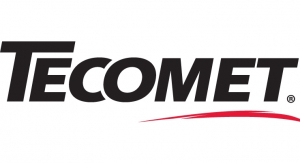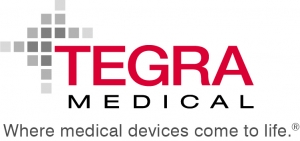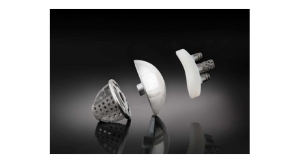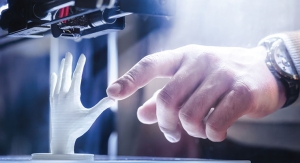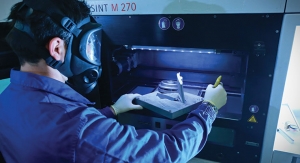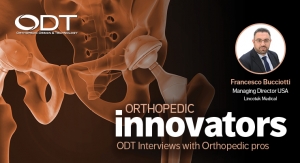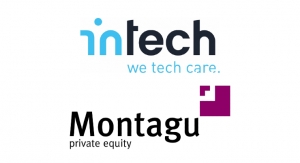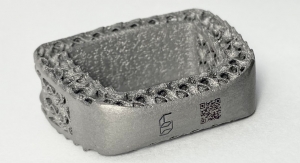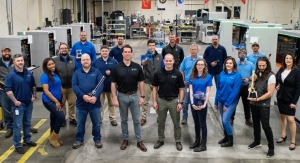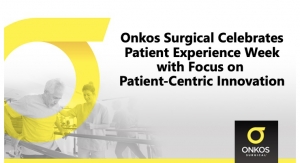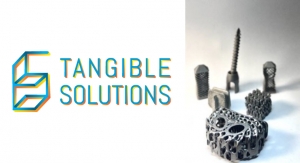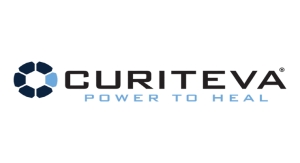Michael Barbella, Managing Editor03.22.17
It begins with a trip to the beach.
The Mediterranean coast, specifically. In Spain. In September.
That’s where the Future Lab gets its best ideas.
Inspiration is plentiful in Palamós, a small fishing village on the Costa Brava that beckons cruise ships and titillates tourists with its seaside castle ruins and late afternoon “catch of the day” auctions. The Future Lab’s muse is significantly more nebulous, though it most likely involves playtime, imagination, and huge bins of brightly-colored Lego bricks.
Lab members comprise the Lego Group’s clandestine yet highly ambitious R&D team, which is tasked with conceiving new, technologically enhanced “play experiences” for kids. Armed with more than a decade’s worth of research into children’s play habits, Future Lab associates spend a week in Palamós blending, brainstorming, and breeding ideas to shape Lego’s future and maintain the toy’s relevance in the digital age. “It’s all about discovering what’s obviously Lego, but has never been seen before,” Lego Group CEO Jorgen Vig Knudstorp explains.
Spawning that discovery is a 24-hour hack-a-thon, a retreat week highlight that pits small groups of industrial designers, programmers, interaction designers, marketers, ethnographic researchers, and master builders against each other for the honor of hatching Lego’s next Big Idea. The best proposals are pursued back in Denmark.
One of the most recent retreat-conceived concepts made its market debut in the summer of 2014. Lego Fusion, introduced for a limited time in North American Toys “R” Us and Lego retail outlets, combined the iconic construction bricks with digital game play. A special app enabled Lego architects to use augmented reality to photograph structures they built at home and create an authentic Lego town. The app aligned with a special front brick, scanned anything attached to it, and converted the building into a 3D structure in the game.
Lego Fusion was a by-product of Future Lab research that found no meaningful distinctions between kids’ physical play (like snapping Lego bricks together) and digital gaming.
The data forms the basis of the group’s ongoing brief, “One Reality,” which emphasizes novel hybrid digital-physical Lego experiences (infusing traditional brick play and software).
“There’s the famous quote that if you want to understand how animals live, you don’t go to the zoo, you go to the jungle,” Knudstorp told Fast Company. “The Future Lab has really pioneered that within Lego...It’s been a real design-thinking approach to innovation, which we’ve learned an awful lot from.”
That same kind of approach is beneficial in orthopedics, where specialization and 3D printing are driving implant design. Replacement joints are now being offered in more sizes and geometries to improve fit, while 3D printing is enabling device manufacturers to create customized body parts for trauma and spinal patients.
To better understand the factors currently affecting orthopedic research and development (R&D), Orthopedic Design & Technology spoke with various industry professionals over the last few weeks. Participants included:
Michelle Fleming, vice president and general manager of the OR Disposables Division at Spectrum Laboratories Inc., a developer and manufacturer of bioseparation and cell line management products used for the filtration, isolation, purification, and concentration of pharmaceuticals, diagnostics, food, beverages, and industrial fluids. The company is headquartered in Rancho Dominguez, Calif.
Barry L. Parker, senior vice president of design and development/innovation at Tecomet Inc., a Wilmington, Mass.-based provider of manufacturing solutions for complex, high-precision products and services for the medical device and aerospace markets. The company’s medical manufacturing ranges from artificial hips and cranial implants to artificial spinal discs and cardiovascular implant components.
Victoria Trafka, president and lead engineer at Engineering & Quality Solutions Inc., a medtech consulting firm with particular expertise in orthopedics. The company provides Finite Element Analysis and engineering analysis as well as product development and U.S. Food and Drug Administration compliance and quality system services assistance. The firm is based in Colorado Springs, Colo.
Mike Treleaven, vice president of the GENESIS Tech Center at Tegra Medical, a medical device contract manufacturer in Franklin, Mass. The GENESIS Tech Center serves as the company’s prototyping headquarters.
Michael Barbella: What are the current trends in orthopedic device R&D and design?
Michelle Fleming: Our population is growing older and heavier. The burden of carrying extra weight, along with joint deterioration from increased wear and tear, contributes to increased orthopedic disorders. We are striving to remain active longer, so sports and spine injuries continue to increase as we age. Arthritis and osteoporosis are a continually growing concern for our older population.
The increase in these disorders help drive increased demand for improved orthopedic technology. We will continue to see the creation of new precision tools, equipment, implants, and techniques to help address this demand.
Barry L. Parker: At Tecomet, our team’s perspective on this topic really comes from implant manufacturing process development and instrument and case R&D/design followed by the subsequent manufacturing processes. From this perspective, we see trends in areas such as overall instrument set downsizing, instrument and case designs for improved clean-ability, patient-matched devices (instruments/implants) based on scan data, increased use of virtual design tools such as simulation and virtual testing to reduce development timeframes, increased adoption of robotic applications, and an increased focus on design-for-additive fabrication through topology optimization and integration of porous structures and implant surfaces. We basically see the trends in three categories: Reducing cost; improving throughput and speed to market; and improving outcomes.
Victoria Trafka: At Engineering & Quality Solutions Inc., we’re continuing to see implant designs being driven by specialization, meaning the devices are meant to answer very specific clinical needs, surgeon preferences, or patient conditions. For example, implants are being designed in more size and geometry offerings than before to better fit the patient and their specific needs. Or a more universal implant is being expanded into two or three design variations that are better suited for particular clinical scenarios. Foot and ankle implants are a prime example, as several new foot and ankle systems have been introduced to the market. These new devices are designed and manufactured specially for foot and ankle anatomy and fractures, and provide a more precise surgical option than utilizing general small fragment implants. The designs aren’t radically different from previous implants, but they include geometry and features that make them especially effective for foot and ankle applications.
3D printing is still trending in orthopedic design, as it has been for a couple of years. The benefits of 3D printing were first realized in spinal implants with porous surfaces made to improve bone ingrowth. Recently, 3D printing is gaining use in trauma implants as designers use the technology to not only promote bony ingrowth in certain applications but also to create lattice structures which allow for direct incorporation of biologics. And in both trauma and spine, 3D printing is increasingly being used to design and manufacture custom patient implants.
Barbella: What are the design challenges facing R&D teams and designers of implants? How are companies overcoming these challenges?
Fleming: The orthopedic market is constantly changing. The role of new and mature orthopedic-designed products must constantly be considered. Design technology improves, techniques are updated, and patients’ needs evolve. We are striving to remain active longer, so sports and spine injuries continue to increase as we age. Advances in manufacturing, 3D printing, precision designed tools, and the increased use of robotic systems into surgical practice all must now be considered by R&D. Choices of material selection are much greater, and changing materials available make the choices much wider at a varying cost. This also greatly impacts the regulatory path of changing technology.
Parker: Speed is always a key challenge in the path to commercialization and often prototypes or proof of concept parts are a lengthy component of the total design process. Tecomet works with customers to compress the time involved in those aspects by leveraging our Quick Launch dedicated prototyping resources and also by utilizing our additive manufacturing capability to deliver products for labs in days versus weeks. Where reusable instrument devices are concerned, we have seen some challenges in design for clean-ability while still addressing the aspects of functionality and aesthetics. In some instances we have addressed this challenge with conversion to a single-use product where it is feasible. We have also addressed this challenge with designs specifically focused on disassembly to accommodate cleaning. This can be challenging to accomplish while still addressing complexity and cost targets. In the area of implants and process development, we see companies working diligently to optimize how bone ingrowth surfaces are incorporated into the implants, whether it be by the industry standard practices, fully additive manufacturing or by some secondary processing involving additive. Another common challenge we’ve experienced is that it is quite typical for collaborative design teams to be working from various distances and associated global time zones. We find that clearly defined project plans along with extensive use of Web-based meetings are helpful to share relevant documents and images and overcome this challenge.
Trafka: The main challenge in recent years has been managing shrinking R&D budgets and resources. Companies had to put projects on hold, combine projects, or ask development teams to be more creative about spending. To save money, one answer was to bundle products for testing and regulatory submissions. The downside of this approach is that it usually increases project timelines and thereby delays market introductions and new revenues.
Now that R&D is getting more funding, the main challenge is finding qualified workers to fulfill project team needs. Companies are aggressively pursuing experienced engineers and investing in training for less experienced resources. And, of course, many companies are outsourcing some R&D tasks to reduce costs and improve speed to market.
Another design challenge that’s important in the current climate is balancing device cost with function and features. Hospitals and surgeons are facing lower reimbursements and companies are being pushed for lower implant costs. Development teams are under pressure to design an exceptional device but also tightly manage manufacturing costs. This is causing a resurgence of the application of Design for Manufacturability (DFM) and Design for Assembly principles in orthopedic development.
Mike Treleaven: Wherever R&D takes place, it’s important to take advantage of DFM expertise while prototyping and developing a product to ensure the manufacturing process is as efficient and cost-effective as it can be. When you make DFM an integral part of the manufacturing process, you can catch any issues that would add cost or delays right from the start. Then you can scale up to full production of the products and get them to market more quickly.
Barbella: What are some of the driving forces behind the latest implant designs?
Fleming: Ongoing declining reimbursements for older technologies are forcing many practices to consider upgrading their orthopedic solutions.
Parker: In a general sense, we see that companies need to demonstrate long-term value into their new devices, such as improved procedural efficiency or improved clinical results. It’s basically an equation that comes down to proving the economic clinical value in the device.
As Tecomet is a supplier to the industry, we certainly see cost being a major driver and there is ongoing pressure to reduce those costs. With orthopedic instruments being considered capital expenditures to the OEM, improving the total cost of acquisition means that OEMs can economically deploy more instrument sets to penetrate new markets. As a result, we are seeing much more receptiveness to DFM inputs at earlier stages in the development process for both instruments and implants. As an example, Tecomet has successfully worked with our customers’ R&D teams to utilize unique technologies like our chemical etching and marking process capabilities to more cost-effectively manufacture implant and instrument products. We also see a lot of companies striving to fill gaps in their product portfolios so that they can offer a more full (bundled) range of products to hospital purchasing groups. This force has led many of our customers to either acquire existing platforms, or design and develop new systems quickly to compete in that specific market space. Lastly, as I noted earlier, we are seeing computer assisted/robotic approaches continuing to gain speed, which brings new challenges in product designs.
Trafka: I think patients and surgeons are striving for better and better surgical outcomes. Patients want and expect to return to 100 percent mobility and activity after surgery. This is driving companies to provide more device options and improved designs which can help achieve that goal. Therefore, implants are being designed in more size options, more geometry options or even semi-custom and full custom options. We see this happening with spinal fusion devices being designed for a variety of lordosis conditions and with adjustable heights to better match patient anatomy and needs. A better fitting implant results in fewer complications and better patient outcomes.
Also, 3D printing continues to drive trends in implant designs because the technology removes some of the barriers of traditional manufacturing and allows for more complex and innovative designs. One instance is newer spinal interbody fusion devices, which are composed of varying layers of titanium, ranging from solid material to slightly porous to very porous in a single part. The capabilities of 3D printing clearly affected these design concepts.
Barbella: How important are academic collaborations in orthopedic research and implant design?
Parker: Academic collaboration is certainly important as we see universities better geared to carrying out basic scientific research around things like materials and processes, which can and do lead to new and improved orthopedic devices. On the industry side, we need to be in a position to recognize the potential of this research, understand how the research addresses specific needs, and in turn creates a solid value proposition. From there, industry can add the proper fuel to enable commercialization. An example would be the case of additive manufacturing, where there are numerous universities with additive labs and focus. While we are still very early stage with this exciting technology, I feel that university collaboration will help fully optimize its use in our industry and others.
Trafka: I believe that collaborations between device companies and academic institutions are very beneficial to the orthopedic industry. The advantage of academic research teams is that they’re led by the foremost authorities in their field, they usually approach their research from an unbiased viewpoint, and they’re typically given more time to thoroughly investigate a subject and reach conclusions. We’ve worked with two different universities on orthopedic projects where the university research teams provided vital data such as device efficacy or specific human biomechanics data. The research data was then used to create better implant designs. Many times, university research data can help reduce design iterations and improve time to market or answer FDA questions during regulatory review. Other times, university research teams can fill a research gap that is difficult to meet in private industry.
Barbella: What are the advantages of outsourcing R&D work as opposed to keeping it in-house? And, what are the advantages of keeping such work in-house?
Fleming: How OEMs and their contract manufacturers (CMs) can collaborate to drive innovations and cost control:
Trafka: The primary advantage of outsourced R&D is improved project timelines, with the second benefit being reduced overall PD costs. Choosing the right consultant should result in added resources that are very experienced in the orthopedic industry. This means they remain current on industry technology, trends, standards, and regulations, and they already know what it takes to navigate through a medical device project efficiently. Subcontract personnel can begin working on the project right away—there’s no delay with hiring, training, and integrating new personnel into an organization. By engaging an expert consultant, companies can get the job done right the first time in a shorter period, which directly and indirectly reduces cost. The outsourced model works great for start-ups to large well-established companies. Start-ups can maximize limited budgets by engaging expert R&D resources only when needed. Larger, established companies can optimize timelines with outsourcing, since full-time employees may not focus exclusively on the project because they typically juggle many projects and responsibilities.
Conversely, some companies may want to keep R&D in-house due to confidentiality of intellectual property, to build a technical knowledge base, or to maintain more direct control over activities. However, these concerns can be mitigated with outsourced development as well by carefully choosing outside resources that are highly reputable and professional.
Barbella: What kind of impact have FDA regulations had on orthopedic R&D and design?
Fleming: Tightened regulations make innovation harder to achieve. Once a product is approved, it is far more cumbersome, timely, and costly to gain approval on new and improved materials.
Parker: We live in an industry of compliance and have not seen any relatively recent regulations that had a notable impact; however, it seems that through various recent audits, the FDA is possibly beginning to scrutinize the existing classifications of devices to evaluate if they are appropriate or require a higher level of classification. While this is an unknown at present, it could bring a more laborious and ultimately longer pathway to commercialization of new technologies or drive some remediation of existing devices.
Trafka: In my experience, there are two current FDA trends that are starting to impact orthopedic R&D. First, the FDA has become very interested and involved in 3D printing as it applies to medical devices. FDA personnel are conducting internal research, attending workshops and becoming knowledgeable about the technology. This is resulting in increased FDA scrutiny and requirements for devices manufactured using 3D printing; therefore, R&D teams are being compelled to increase testing, validation, and qualification activities of devices made with this technology. Secondly, the FDA is pushing for new and/or updated orthopedic and spine material and test standards, and also working to add acceptance criteria to standards in some cases. These new or updated standards will give R&D professionals a more clear understanding of device requirements up front, and could level the playing field for some device comparisons, which ultimately helps with device equivalency and clearance. However, the release of new standards in the middle of a project could adversely affect R&D efforts by adding or changing requirements, thereby adding unexpected cost and time.
Barbella: Has the medical device tax had any effect on R&D?
Fleming: Our industry is still feeling the financial effects from the burden this tax imposed, and we can only hope it will remain suspended and eventually repealed. The temporary suspension of this tax will spur increased investment in research and development.
Parker: Initially, it certainly had a negative impact on R&D in that R&D budgets were one of the first casualties to cover the cost of the tax. However, we operate in a very adaptable industry and after a couple of years, things seemed to normalize. I believe it’s safe to now say that any prior negative impact of the tax should now be reversed.
Trafka: The medical device tax definitely had a negative effect on orthopedic R&D, but its effect was amplified because of other related factors. It was instituted during an economic recession when companies were already cautious about spending and investing in general. Add major healthcare changes to the device tax and the combination created too much uncertainty and added cost for many companies and investors to comfortably predict their return on R&D investments. We saw a reduction in the creation of new medical startups as well as a decline in new projects in established device manufacturers. Existing projects were completed but no new projects followed; and in some cases existing projects were frozen and cancelled.
Barbella: How easy (or difficult) is it to find qualified R&D workers?
Parker: I believe this is largely a geographic issue. There are many skilled resources available in the global market. However, depending upon where a company is located, they may or may not have difficulty finding qualified workers or getting qualified workers to move to their location.
Trafka: R&D is ramping up in orthopedics, which means companies need experienced medical device engineers and developers to work on projects now. Unfortunately, the previous climate of economic uncertainly, mergers and acquisitions, and the medical device tax caused many good resources to be let go, change jobs or even leave the industry. Recent improvements in the overall economy and suspension of the device tax has given confidence to companies who were previously hesitant to invest in R&D. Consequently, it has become increasingly challenging for companies to find and hire experienced/qualified medical device R&D personnel. Firms are dealing with this shortage by either outsourcing development projects to qualified individuals or hiring less experiences personnel and investing in training and mentoring, or a combination of both. The current shortage of experienced R&D workers is certainly slowing the progress of many projects. We have seen a noticeable increase in requests for product development services and for training in topics such as medical device design verification, and validation and basic drafting and GD&T.
Treleaven: As difficult as it may be for OEMs to fill all of their R&D positions, we are impressed with the many highly-talented, young R&D professionals our customers have hired and appreciate the expertise they offer. We work closely with them as we develop the most efficient way to manufacture their designs.
The Mediterranean coast, specifically. In Spain. In September.
That’s where the Future Lab gets its best ideas.
Inspiration is plentiful in Palamós, a small fishing village on the Costa Brava that beckons cruise ships and titillates tourists with its seaside castle ruins and late afternoon “catch of the day” auctions. The Future Lab’s muse is significantly more nebulous, though it most likely involves playtime, imagination, and huge bins of brightly-colored Lego bricks.
Lab members comprise the Lego Group’s clandestine yet highly ambitious R&D team, which is tasked with conceiving new, technologically enhanced “play experiences” for kids. Armed with more than a decade’s worth of research into children’s play habits, Future Lab associates spend a week in Palamós blending, brainstorming, and breeding ideas to shape Lego’s future and maintain the toy’s relevance in the digital age. “It’s all about discovering what’s obviously Lego, but has never been seen before,” Lego Group CEO Jorgen Vig Knudstorp explains.
Spawning that discovery is a 24-hour hack-a-thon, a retreat week highlight that pits small groups of industrial designers, programmers, interaction designers, marketers, ethnographic researchers, and master builders against each other for the honor of hatching Lego’s next Big Idea. The best proposals are pursued back in Denmark.
One of the most recent retreat-conceived concepts made its market debut in the summer of 2014. Lego Fusion, introduced for a limited time in North American Toys “R” Us and Lego retail outlets, combined the iconic construction bricks with digital game play. A special app enabled Lego architects to use augmented reality to photograph structures they built at home and create an authentic Lego town. The app aligned with a special front brick, scanned anything attached to it, and converted the building into a 3D structure in the game.
Lego Fusion was a by-product of Future Lab research that found no meaningful distinctions between kids’ physical play (like snapping Lego bricks together) and digital gaming.
The data forms the basis of the group’s ongoing brief, “One Reality,” which emphasizes novel hybrid digital-physical Lego experiences (infusing traditional brick play and software).
“There’s the famous quote that if you want to understand how animals live, you don’t go to the zoo, you go to the jungle,” Knudstorp told Fast Company. “The Future Lab has really pioneered that within Lego...It’s been a real design-thinking approach to innovation, which we’ve learned an awful lot from.”
That same kind of approach is beneficial in orthopedics, where specialization and 3D printing are driving implant design. Replacement joints are now being offered in more sizes and geometries to improve fit, while 3D printing is enabling device manufacturers to create customized body parts for trauma and spinal patients.
To better understand the factors currently affecting orthopedic research and development (R&D), Orthopedic Design & Technology spoke with various industry professionals over the last few weeks. Participants included:
Michelle Fleming, vice president and general manager of the OR Disposables Division at Spectrum Laboratories Inc., a developer and manufacturer of bioseparation and cell line management products used for the filtration, isolation, purification, and concentration of pharmaceuticals, diagnostics, food, beverages, and industrial fluids. The company is headquartered in Rancho Dominguez, Calif.
Barry L. Parker, senior vice president of design and development/innovation at Tecomet Inc., a Wilmington, Mass.-based provider of manufacturing solutions for complex, high-precision products and services for the medical device and aerospace markets. The company’s medical manufacturing ranges from artificial hips and cranial implants to artificial spinal discs and cardiovascular implant components.
Victoria Trafka, president and lead engineer at Engineering & Quality Solutions Inc., a medtech consulting firm with particular expertise in orthopedics. The company provides Finite Element Analysis and engineering analysis as well as product development and U.S. Food and Drug Administration compliance and quality system services assistance. The firm is based in Colorado Springs, Colo.
Mike Treleaven, vice president of the GENESIS Tech Center at Tegra Medical, a medical device contract manufacturer in Franklin, Mass. The GENESIS Tech Center serves as the company’s prototyping headquarters.
Michael Barbella: What are the current trends in orthopedic device R&D and design?
Michelle Fleming: Our population is growing older and heavier. The burden of carrying extra weight, along with joint deterioration from increased wear and tear, contributes to increased orthopedic disorders. We are striving to remain active longer, so sports and spine injuries continue to increase as we age. Arthritis and osteoporosis are a continually growing concern for our older population.
The increase in these disorders help drive increased demand for improved orthopedic technology. We will continue to see the creation of new precision tools, equipment, implants, and techniques to help address this demand.
Barry L. Parker: At Tecomet, our team’s perspective on this topic really comes from implant manufacturing process development and instrument and case R&D/design followed by the subsequent manufacturing processes. From this perspective, we see trends in areas such as overall instrument set downsizing, instrument and case designs for improved clean-ability, patient-matched devices (instruments/implants) based on scan data, increased use of virtual design tools such as simulation and virtual testing to reduce development timeframes, increased adoption of robotic applications, and an increased focus on design-for-additive fabrication through topology optimization and integration of porous structures and implant surfaces. We basically see the trends in three categories: Reducing cost; improving throughput and speed to market; and improving outcomes.
Victoria Trafka: At Engineering & Quality Solutions Inc., we’re continuing to see implant designs being driven by specialization, meaning the devices are meant to answer very specific clinical needs, surgeon preferences, or patient conditions. For example, implants are being designed in more size and geometry offerings than before to better fit the patient and their specific needs. Or a more universal implant is being expanded into two or three design variations that are better suited for particular clinical scenarios. Foot and ankle implants are a prime example, as several new foot and ankle systems have been introduced to the market. These new devices are designed and manufactured specially for foot and ankle anatomy and fractures, and provide a more precise surgical option than utilizing general small fragment implants. The designs aren’t radically different from previous implants, but they include geometry and features that make them especially effective for foot and ankle applications.
3D printing is still trending in orthopedic design, as it has been for a couple of years. The benefits of 3D printing were first realized in spinal implants with porous surfaces made to improve bone ingrowth. Recently, 3D printing is gaining use in trauma implants as designers use the technology to not only promote bony ingrowth in certain applications but also to create lattice structures which allow for direct incorporation of biologics. And in both trauma and spine, 3D printing is increasingly being used to design and manufacture custom patient implants.
Barbella: What are the design challenges facing R&D teams and designers of implants? How are companies overcoming these challenges?
Fleming: The orthopedic market is constantly changing. The role of new and mature orthopedic-designed products must constantly be considered. Design technology improves, techniques are updated, and patients’ needs evolve. We are striving to remain active longer, so sports and spine injuries continue to increase as we age. Advances in manufacturing, 3D printing, precision designed tools, and the increased use of robotic systems into surgical practice all must now be considered by R&D. Choices of material selection are much greater, and changing materials available make the choices much wider at a varying cost. This also greatly impacts the regulatory path of changing technology.
Parker: Speed is always a key challenge in the path to commercialization and often prototypes or proof of concept parts are a lengthy component of the total design process. Tecomet works with customers to compress the time involved in those aspects by leveraging our Quick Launch dedicated prototyping resources and also by utilizing our additive manufacturing capability to deliver products for labs in days versus weeks. Where reusable instrument devices are concerned, we have seen some challenges in design for clean-ability while still addressing the aspects of functionality and aesthetics. In some instances we have addressed this challenge with conversion to a single-use product where it is feasible. We have also addressed this challenge with designs specifically focused on disassembly to accommodate cleaning. This can be challenging to accomplish while still addressing complexity and cost targets. In the area of implants and process development, we see companies working diligently to optimize how bone ingrowth surfaces are incorporated into the implants, whether it be by the industry standard practices, fully additive manufacturing or by some secondary processing involving additive. Another common challenge we’ve experienced is that it is quite typical for collaborative design teams to be working from various distances and associated global time zones. We find that clearly defined project plans along with extensive use of Web-based meetings are helpful to share relevant documents and images and overcome this challenge.
Trafka: The main challenge in recent years has been managing shrinking R&D budgets and resources. Companies had to put projects on hold, combine projects, or ask development teams to be more creative about spending. To save money, one answer was to bundle products for testing and regulatory submissions. The downside of this approach is that it usually increases project timelines and thereby delays market introductions and new revenues.
Now that R&D is getting more funding, the main challenge is finding qualified workers to fulfill project team needs. Companies are aggressively pursuing experienced engineers and investing in training for less experienced resources. And, of course, many companies are outsourcing some R&D tasks to reduce costs and improve speed to market.
Another design challenge that’s important in the current climate is balancing device cost with function and features. Hospitals and surgeons are facing lower reimbursements and companies are being pushed for lower implant costs. Development teams are under pressure to design an exceptional device but also tightly manage manufacturing costs. This is causing a resurgence of the application of Design for Manufacturability (DFM) and Design for Assembly principles in orthopedic development.
Mike Treleaven: Wherever R&D takes place, it’s important to take advantage of DFM expertise while prototyping and developing a product to ensure the manufacturing process is as efficient and cost-effective as it can be. When you make DFM an integral part of the manufacturing process, you can catch any issues that would add cost or delays right from the start. Then you can scale up to full production of the products and get them to market more quickly.
Barbella: What are some of the driving forces behind the latest implant designs?
Fleming: Ongoing declining reimbursements for older technologies are forcing many practices to consider upgrading their orthopedic solutions.
Parker: In a general sense, we see that companies need to demonstrate long-term value into their new devices, such as improved procedural efficiency or improved clinical results. It’s basically an equation that comes down to proving the economic clinical value in the device.
As Tecomet is a supplier to the industry, we certainly see cost being a major driver and there is ongoing pressure to reduce those costs. With orthopedic instruments being considered capital expenditures to the OEM, improving the total cost of acquisition means that OEMs can economically deploy more instrument sets to penetrate new markets. As a result, we are seeing much more receptiveness to DFM inputs at earlier stages in the development process for both instruments and implants. As an example, Tecomet has successfully worked with our customers’ R&D teams to utilize unique technologies like our chemical etching and marking process capabilities to more cost-effectively manufacture implant and instrument products. We also see a lot of companies striving to fill gaps in their product portfolios so that they can offer a more full (bundled) range of products to hospital purchasing groups. This force has led many of our customers to either acquire existing platforms, or design and develop new systems quickly to compete in that specific market space. Lastly, as I noted earlier, we are seeing computer assisted/robotic approaches continuing to gain speed, which brings new challenges in product designs.
Trafka: I think patients and surgeons are striving for better and better surgical outcomes. Patients want and expect to return to 100 percent mobility and activity after surgery. This is driving companies to provide more device options and improved designs which can help achieve that goal. Therefore, implants are being designed in more size options, more geometry options or even semi-custom and full custom options. We see this happening with spinal fusion devices being designed for a variety of lordosis conditions and with adjustable heights to better match patient anatomy and needs. A better fitting implant results in fewer complications and better patient outcomes.
Also, 3D printing continues to drive trends in implant designs because the technology removes some of the barriers of traditional manufacturing and allows for more complex and innovative designs. One instance is newer spinal interbody fusion devices, which are composed of varying layers of titanium, ranging from solid material to slightly porous to very porous in a single part. The capabilities of 3D printing clearly affected these design concepts.
Barbella: How important are academic collaborations in orthopedic research and implant design?
Parker: Academic collaboration is certainly important as we see universities better geared to carrying out basic scientific research around things like materials and processes, which can and do lead to new and improved orthopedic devices. On the industry side, we need to be in a position to recognize the potential of this research, understand how the research addresses specific needs, and in turn creates a solid value proposition. From there, industry can add the proper fuel to enable commercialization. An example would be the case of additive manufacturing, where there are numerous universities with additive labs and focus. While we are still very early stage with this exciting technology, I feel that university collaboration will help fully optimize its use in our industry and others.
Trafka: I believe that collaborations between device companies and academic institutions are very beneficial to the orthopedic industry. The advantage of academic research teams is that they’re led by the foremost authorities in their field, they usually approach their research from an unbiased viewpoint, and they’re typically given more time to thoroughly investigate a subject and reach conclusions. We’ve worked with two different universities on orthopedic projects where the university research teams provided vital data such as device efficacy or specific human biomechanics data. The research data was then used to create better implant designs. Many times, university research data can help reduce design iterations and improve time to market or answer FDA questions during regulatory review. Other times, university research teams can fill a research gap that is difficult to meet in private industry.
Barbella: What are the advantages of outsourcing R&D work as opposed to keeping it in-house? And, what are the advantages of keeping such work in-house?
Fleming: How OEMs and their contract manufacturers (CMs) can collaborate to drive innovations and cost control:
- OEMs and CMs can collaborate on new ways for improving output while reducing costs;
- OEM and CM strategic partnerships are a way to exploit new technologies by leveraging the CM’s broad experience base. The key is to partner with a CM evolving fast enough to meet your market needs.
- OEMs support CMs that are introducing new and innovative processes.
Trafka: The primary advantage of outsourced R&D is improved project timelines, with the second benefit being reduced overall PD costs. Choosing the right consultant should result in added resources that are very experienced in the orthopedic industry. This means they remain current on industry technology, trends, standards, and regulations, and they already know what it takes to navigate through a medical device project efficiently. Subcontract personnel can begin working on the project right away—there’s no delay with hiring, training, and integrating new personnel into an organization. By engaging an expert consultant, companies can get the job done right the first time in a shorter period, which directly and indirectly reduces cost. The outsourced model works great for start-ups to large well-established companies. Start-ups can maximize limited budgets by engaging expert R&D resources only when needed. Larger, established companies can optimize timelines with outsourcing, since full-time employees may not focus exclusively on the project because they typically juggle many projects and responsibilities.
Conversely, some companies may want to keep R&D in-house due to confidentiality of intellectual property, to build a technical knowledge base, or to maintain more direct control over activities. However, these concerns can be mitigated with outsourced development as well by carefully choosing outside resources that are highly reputable and professional.
Barbella: What kind of impact have FDA regulations had on orthopedic R&D and design?
Fleming: Tightened regulations make innovation harder to achieve. Once a product is approved, it is far more cumbersome, timely, and costly to gain approval on new and improved materials.
Parker: We live in an industry of compliance and have not seen any relatively recent regulations that had a notable impact; however, it seems that through various recent audits, the FDA is possibly beginning to scrutinize the existing classifications of devices to evaluate if they are appropriate or require a higher level of classification. While this is an unknown at present, it could bring a more laborious and ultimately longer pathway to commercialization of new technologies or drive some remediation of existing devices.
Trafka: In my experience, there are two current FDA trends that are starting to impact orthopedic R&D. First, the FDA has become very interested and involved in 3D printing as it applies to medical devices. FDA personnel are conducting internal research, attending workshops and becoming knowledgeable about the technology. This is resulting in increased FDA scrutiny and requirements for devices manufactured using 3D printing; therefore, R&D teams are being compelled to increase testing, validation, and qualification activities of devices made with this technology. Secondly, the FDA is pushing for new and/or updated orthopedic and spine material and test standards, and also working to add acceptance criteria to standards in some cases. These new or updated standards will give R&D professionals a more clear understanding of device requirements up front, and could level the playing field for some device comparisons, which ultimately helps with device equivalency and clearance. However, the release of new standards in the middle of a project could adversely affect R&D efforts by adding or changing requirements, thereby adding unexpected cost and time.
Barbella: Has the medical device tax had any effect on R&D?
Fleming: Our industry is still feeling the financial effects from the burden this tax imposed, and we can only hope it will remain suspended and eventually repealed. The temporary suspension of this tax will spur increased investment in research and development.
Parker: Initially, it certainly had a negative impact on R&D in that R&D budgets were one of the first casualties to cover the cost of the tax. However, we operate in a very adaptable industry and after a couple of years, things seemed to normalize. I believe it’s safe to now say that any prior negative impact of the tax should now be reversed.
Trafka: The medical device tax definitely had a negative effect on orthopedic R&D, but its effect was amplified because of other related factors. It was instituted during an economic recession when companies were already cautious about spending and investing in general. Add major healthcare changes to the device tax and the combination created too much uncertainty and added cost for many companies and investors to comfortably predict their return on R&D investments. We saw a reduction in the creation of new medical startups as well as a decline in new projects in established device manufacturers. Existing projects were completed but no new projects followed; and in some cases existing projects were frozen and cancelled.
Barbella: How easy (or difficult) is it to find qualified R&D workers?
Parker: I believe this is largely a geographic issue. There are many skilled resources available in the global market. However, depending upon where a company is located, they may or may not have difficulty finding qualified workers or getting qualified workers to move to their location.
Trafka: R&D is ramping up in orthopedics, which means companies need experienced medical device engineers and developers to work on projects now. Unfortunately, the previous climate of economic uncertainly, mergers and acquisitions, and the medical device tax caused many good resources to be let go, change jobs or even leave the industry. Recent improvements in the overall economy and suspension of the device tax has given confidence to companies who were previously hesitant to invest in R&D. Consequently, it has become increasingly challenging for companies to find and hire experienced/qualified medical device R&D personnel. Firms are dealing with this shortage by either outsourcing development projects to qualified individuals or hiring less experiences personnel and investing in training and mentoring, or a combination of both. The current shortage of experienced R&D workers is certainly slowing the progress of many projects. We have seen a noticeable increase in requests for product development services and for training in topics such as medical device design verification, and validation and basic drafting and GD&T.
Treleaven: As difficult as it may be for OEMs to fill all of their R&D positions, we are impressed with the many highly-talented, young R&D professionals our customers have hired and appreciate the expertise they offer. We work closely with them as we develop the most efficient way to manufacture their designs.


